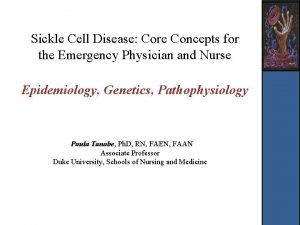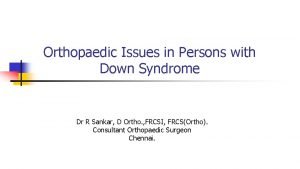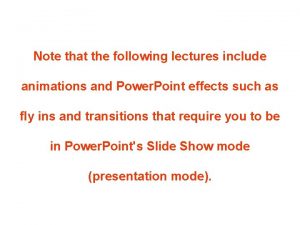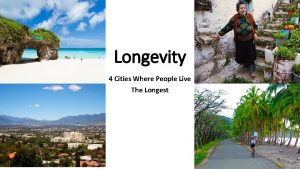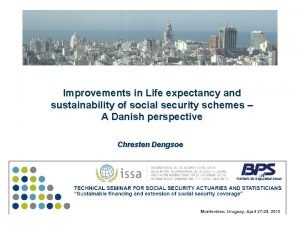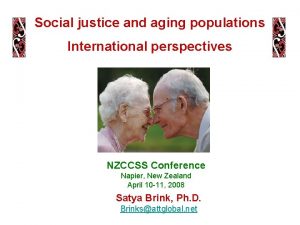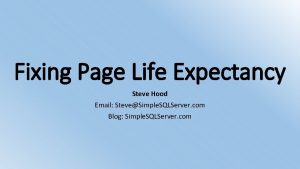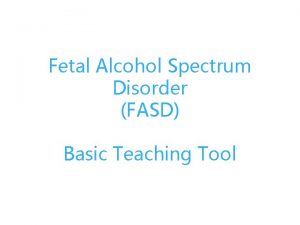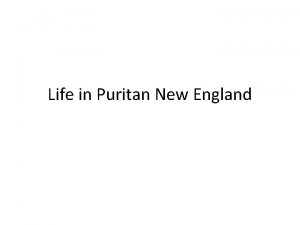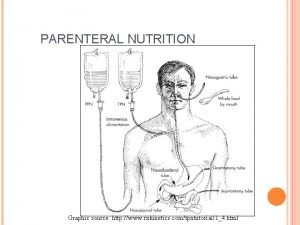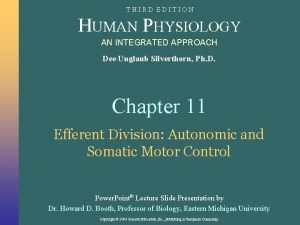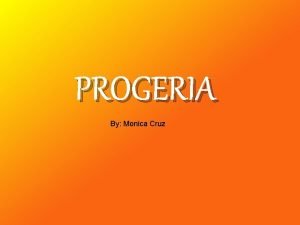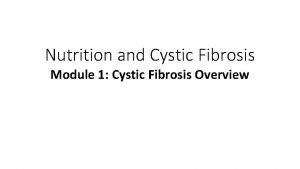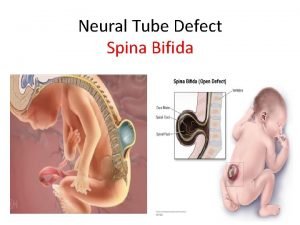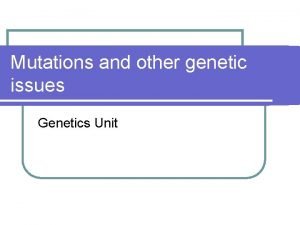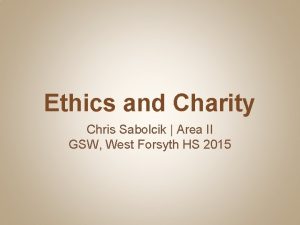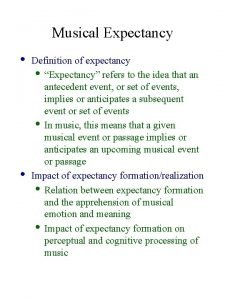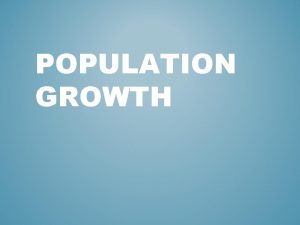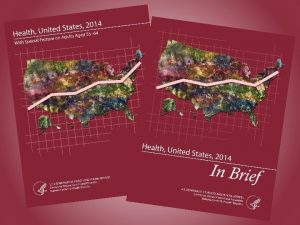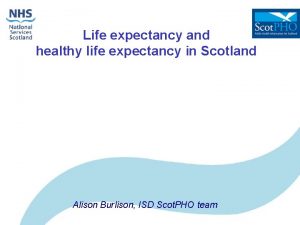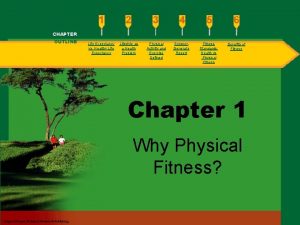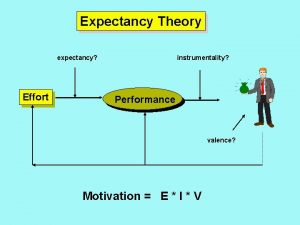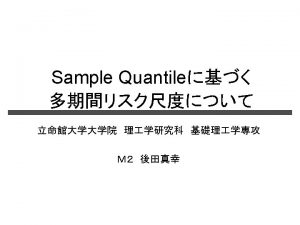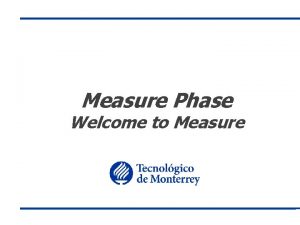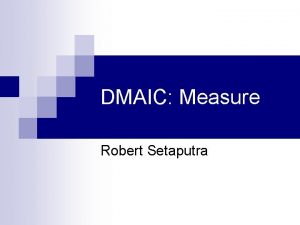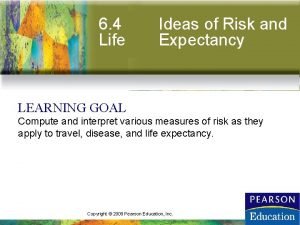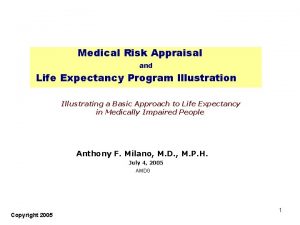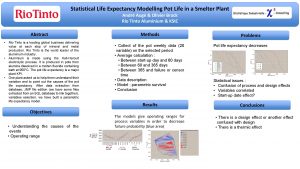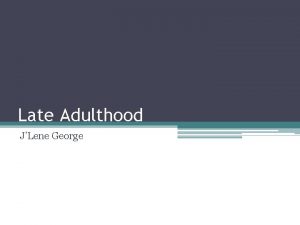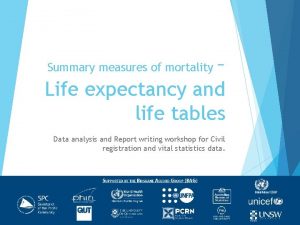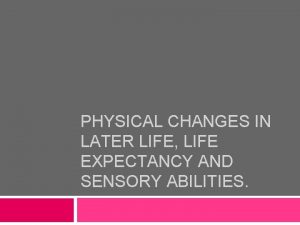Gained Life Expectancy as a Risk Performance Measure






















- Slides: 22

Gained Life Expectancy as a Risk Performance Measure for the Hanford Cleanup Mission Daniel J. Strom and Jeffery D. Vick Pacific Northwest National Laboratory Presented at the Joint Meeting of the Society for Risk Analysis and International Society for Exposure Analysis New Orleans, December 11, 1996 PNNL-SA-28581 Pacific Northwest National Laboratory

Hanford Cleanup • 1500 km 2 site in Washington state • Scrub-steppe terrain with Columbia River • 70 -year effort to deal with legacy from defense nuclear materials production – 177 underground tanks containing highly radioactive material and toxic chemical wastes – irradiated nuclear fuel and radioactive sources – contaminated buildings, land ground water Pacific Northwest National Laboratory

Complex Problem With Multiple Drivers • What, when, and how work is done • Multiple decision dimensions – – – – – Public and worker safety and health Environment Compliance Mission impact (outcomes) Cost efficiency Social, political, economic, and cultural Technology development Values and concerns of stakeholders, Tribes, and regulators Potential for reduced support from the larger public and Congress (not all inclusive) Pacific Northwest National Laboratory

Hanford Strategic Success Indicators • Reduced risks to the worker, the public, and the environment • Increased amount of land other resources recovered for other (private and governmental uses) • Reduced/eliminated total amount of inventory and materials remaining to be cleaned up Backup slide Pacific Northwest National Laboratory

Bottom Line: Are We Making Hanford Safer? • One of four Hanford strategic success indicators: “Reduced risk to the public, worker, …” • Are the “what, when, and how” in Hanford strategies and work plans reducing risk? • Naïve question: “How much safer is Hanford this year than it was last year? ” • No common quantitative basis for comparing risks over time exists at Hanford. Pacific Northwest National Laboratory

Proposed Risk Performance Measures • Measures of human health risk • Requires comparison of scenarios, e. g. , benchmark scenario and alternative cleanup scenarios • Based on short- and long-term risk due to Hanford’s legacy from now until. . . Pacific Northwest National Laboratory

Uses of Proposed Risk Performance Measures • Prospective use: strategic planning and evaluating mission success • Retrospective use: gauging contractor performance – similar to ‘earned value’ technique in project performance measurement – some risks too “lumpy” over time for retrospective use, e. g. , worker fatalities Pacific Northwest National Laboratory

5 Human Health Risks • • • prompt fatalities days lost to injury days lost to illness cancer fatalities heritable (genetic) ill-health Each risk is weighted to convert to years of Lost Life Expectancy (LLE) Pacific Northwest National Laboratory

Collective Committed Risk • Collective: Summed over all persons over a specified time • Committed: Actions taken now are projected to lead to – exposures – intakes – biological change – expectation of harm Pacific Northwest National Laboratory

Centuries Later Still Later After That Time Cleanup Action Projected Off-Site Release of Toxic Material Time Possible Exposure of an Individual Due to Off-Site Release Intake Rate Time Release Rate Level of Effort Present A genetic mutation occurs in exposed individual Exposed individual’s child inherits the mutation Possible Occurrences of Genetic Ill-Health in Exposed Individual’s Descendants Occur -rences Time Pacific Northwest National Laboratory

Risk Performance Measures • Committed collective risk (CCR) due to benchmark maintenance and monitoring scenario • CCR due to particular cleanup and remediation scenario Pacific Northwest National Laboratory

Time Projected CCR Rate Conc. in River Level of Effort Benchmark Maintenance and Monitoring Scenario Benchmark CCR (area under curve) Time Risk Performance Measure = Benchmark CCR - Cleanup CCR (difference between areas under curves) Projected CCR Rate Time Difference in Projected CCR Rates cleanup complete Conc. in River Level of Effort Cleanup and Remediation Scenario Pacific Northwest National Laboratory Cleanup CCR (area under curve) Time

Trading Risk: Workers & Public • Cleanup puts workers at risk – voluntary, clear benefit (paycheck) – informed – more or less controlled • Cleanup averts risk to public – involuntary, no perceived benefit – uninformed – uncontrolled Pacific Northwest National Laboratory

Balancing Risks Human Health Risk from Release of Toxic Material During and After DD&ER Worker Exposure, Illness, Injury, Fatality During DD&ER Pacific Northwest National Laboratory

Waste Management Environmental Restoration Accident Prevention Maintenance Emergency Response D&D Human Health Risk from Accidental or Long-Term Release of Toxic Material Do Nothing Do the Wrong Thing Do the Right Thing Poorly Robotics Worker Hazards Protection Management Programs Do Less Work Training Do Work That’s Less Hazardous Worker Risk: Exposure, Illness, Injury, Fatality During DD&ER Neglect Worker Protection Pacific Northwest National Laboratory Do Work That’s More Hazardous Do More Work

Worker: Public Risk Tradeoff • Radiation limits: – 10: 1 (5 rems: 0. 5 rem) – 50: 1 (5 rems: 0. 1 rem) – 333: 1 (5 rems: 0. 015 rem) • Chemical limits: – you name it, you can find it • Accidents Pacific Northwest National Laboratory

Pacific Northwest National Laboratory

Combining 5 Health Risks • CCR (in years LLE) = Si ki. Ri, where ki is the weighting factor for risk type i that converts it to LLE Ri is the value of risk type i • CCR is computed separately for – acute risk to workers from normal work hazards – risks from accidental releases to both workers and public Pacific Northwest National Laboratory

Gained Life Expectancy • Worker LLE is weighted and added to LLE due to releases: LLE = LLEreleases + wworker LLEworker, routine • A negative difference in years of lost life expectancy is a gained life expectancy (GLE) • RPM (years GLE) = LLEcleanup - LLEbenchmark RPM - risk performance measure Pacific Northwest National Laboratory

Disadvantages of GLE • Need consensus on weighting factors for 5 health endpoints • Need consensus on worker: public tradeoff factor • May be impractical to calculate without sufficient information • Risk surrogates may be required Pacific Northwest National Laboratory

Advantages of GLE • A single, common measure that permits comparison of alternative scenarios • A quantitative answer to the question, “Is Hanford any safer? ” • Forces a formal look at the tough tradeoffs Pacific Northwest National Laboratory

Conclusion • Gained Life Expectancy is a single, unified concept for comparing unrelated hazards and technical cleanup alternatives • GLE includes health effects to workers and public from routine operations and releases of material • Incentives are needed for rewarding work Pacific Northwest National Laboratory
 Life expectancy of sickle cell patients
Life expectancy of sickle cell patients Panda life expectancy
Panda life expectancy Down syndrome life expectancy
Down syndrome life expectancy Why does a star's life expectancy depend on mass
Why does a star's life expectancy depend on mass Island with longest life expectancy
Island with longest life expectancy Life expectancy evolution
Life expectancy evolution Fetal alcohol syndrome life expectancy
Fetal alcohol syndrome life expectancy Xyy male syndrome
Xyy male syndrome 1500 life expectancy
1500 life expectancy Life expectancy definiton
Life expectancy definiton Page life expectancy
Page life expectancy Fetal alcohol syndrome life expectancy
Fetal alcohol syndrome life expectancy Puritan life expectancy
Puritan life expectancy Rxkinetics tpn
Rxkinetics tpn Health life expectancy
Health life expectancy Uk life expectancy 2021
Uk life expectancy 2021 Rohhad life expectancy
Rohhad life expectancy Progeria life expectancy
Progeria life expectancy Cystic fibrosis life expectancy
Cystic fibrosis life expectancy Spna bifida
Spna bifida Edwards syndrome
Edwards syndrome Life expectancy world bank
Life expectancy world bank Color blindness life expectancy
Color blindness life expectancy
